Home - INVITED SPEAKERS
Theodore Goodson III is the Richard Barry Bernstein Professor of Chemistry at the University of Michigan. Dr. Goodson’s research centers on the investigation of ultra-fast, nonlinear optical, and quantum optical properties in organic multi-chromophore and metal cluster systems for particular optical and electronic applications in the condensed phase. He has published over 200 scientific publications and one book and has given more than 300 invited talks. Dr. Goodson has been awarded numerous national and international awards for his research in nonlinear optical and quantum optical effects in novel materials. His lab utilizes entangled photons to do both spectroscopy and microscopy and has been leading this field in to new and promising directions in neuroscience, nanoscience, and medicine. He has founded two companies, the first on high density capacitors for automotive and medical applications, and another on the use of an entangled photon microscope for biological detection and diagnostics with low light levels. He has been awarded for his leadership and mentorship of undergraduate and graduate students. He is Executive Editor of The Journal of Physical Chemistry for the American Chemical Society and has served on a number of academic and technological advisory boards across the country. He is chair of the National Academy of Science Committee on Quantum Information Science in Chemistry. Professor Goodson received his BA in liberal arts from Wabash College in 1991 and his Ph.D. from U of Nebraska-Lincoln in 1996. He was a postdoctoral assistant at the University of Chicago and Postdoctoral fellow at Oxford University (physics).
Ioannis Papakonstantinou received his PhD in Optical Interconnects from University College London in 2008. In 2008-2009 he worked for Sharp Laboratories of Europe on nanotechnologies for optical displays and between 2009-2011 he was with CERN-European Organisation for Nuclear Research investigating optical fibre communication systems for the Large Hadron Collider. He is currently Professor of Photonics and Nanofabrication at the Department of Electronic and Electrical Engineering at UCL in 2011, and Head of the Photonic Innovations Lab (pi-lab). His group’s core research interests lie on light-matter interactions at the nanoscale and his work is supported by 4 grants from the European Research Council.
Professor Mark Goorsky is a leader in heterogeneous integration and includes wafer bonding, layer exfoliation and transfer, and chemical mechanical polishing of semiconductors and optical materials. Goorsky also provides expertise in materials characterization of semiconductor materials and devices, with emphasis on structural (x-ray scattering and electron microscopy) and chemical (electron energy loss spectroscopy, energy dispersive elemental analysis) techniques. He received the university-wide 2016 UCLA Distinguished Teaching Award and the Harvey L. Eby Award for the “Art of Teaching, was a member (2011-2015) of the US Air Force Science Advisory Board, was (2002-2019) associate editor for the Journal of Crystal Growth, was awarded the T.S. Walton Award from the Science Foundation of Ireland in 2010 (where he participated in projects to understand the integration of germanium and III-Vs with silicon) and received (1995-2000) a National Science Foundation CAREER AWARD. He has been on the faculty at UCLA since 1991. He was department chair from 2005-2010 and currently serves on the university-wide committees.
Yoichi Ogata is a Researcher/Staff in the Department of Research and Development in Choi-Ogas plat form and Koito Manufacturing Co., Ltd. His research is in the area of “Nanotechnology” and “Optics”. He received the Ph.D. in Materials Science from JAIST. He worked for several years as a Project Assistant Professor at TUAT, Visiting Research Associate and then later on as Research Associate in University of Rochester. After this, he started working in RIKEN as a researcher, and then moved to University of Tokyo as a collaborative researcher and Yokohama National University as a project researcher. He brought to the table my passion for studying and teaching at a university level “Nonlinear Optics of Nano and Micro-structures” as it primary focused on my career.
Anhui Liang is a national high level talent of China, the second highest level professor. He held several positions, e.g. Chief Scientist, FiberHome Technologies Group; Chief Scientist, WTD; Deputy Director of University Academic Committee, Nanjing University of Posts and Telecommunications, second level professor, Shandong University of Science & Technology and Tyco Submarine Systems Ltd. in USA etc. He is the founder and general manager of Ningbo Micro-color Optical Communication Limited. He has published more than 100 papers and patents. He has made significant contributions in the fields of optical fiber communications, vision, biological optical AI, quantum mechanics and Chinese meridian, chromosome optical fibers and biological fibers. He is China Overseas Chinese Contribution Award recipient (2014); Yearly Person of “Scientific Chinese”(2015). He has made significant contributions in 9 questions which were among 125 questions: exploration and discovery listed by the famous journal Science . His contributions have been well reported in famous national media. Their interview by Baidu Scholar received 180 millions of internet exposures in the first month of the video release in 2021. There are over 700 thousands of audiences in his 8 super-large online scientific lectures.
Mark Lee is Professor of Physics and Materials Science at the University of Texas at Dallas (UTD). He received his Ph.D. in Applied Physics from Stanford University in 1991 and did a postdoc at the NEC Research Institute. Prior to joining UTD, Dr. Lee was on the physics faculty at the University of Virginia, a research staff member at Bell Laboratories, and a scientist and department manager in the Center for Integrated Nanotechnologies at Sandia National Laboratories. Prof. Lee is a National Science Foundation CAREER award winner, a Research Corporation Cottrell Scholar, former Chair of the American Physical Society (APS) Forum on Industrial & Applied Physics, former head of the UTD Physics Department, and a Fellow of the APS for his research accomplishments in solid-state physics and applied physics.
Dr. Olena Tkach received the Master Diploma of Electronic Instruments and Devices at Sumy State University (Sumy, Ukraine) in 2007. She received her PhD degree in Solid State Physics (Thesis «The processes of phase formation, electrophysical and galvanomagnetic properties of multilayer film systems Pd/Fe») in 2012. During PhD she had a scholarship from Visegrad Fund in the Institute of Nuclear Physics (Polish Academy of Sciences, Krakow). Dr. Tkach had continued her development as a postdoc within the framework of National Scholarship Program of the Slovak Republic (SAIA), in the Institute of Physics, Faculty of Science, P. J. Safarik University (Kosice, Slovak Republic). From 2016-2022 she was Vice-Dean for educational and methodical work at Sumy State University. From 2022 until the present Dr. Tkach is working as a scientific assistant at Johannes Gutenberg University of Mainz. The present field of work is photoemission and momentum microscopy with an emphasis on circular dichroism effects.
Liu Zuoye, got a Ph. D. from Lanzhou University in 2015, now works as a professor at School of Nuclear Science and Technology in Lanzhou University. From 2012 to 2015, he worked as Joint Ph. D. student in Max-Planck institute for nuclear physics. At present, he is mainly engaged in the research of ultrafast physics and nuclear testing technology basing on pulsed laser. In recent years, he has published more than 40 SCI academic papers in Phys. Rev. Lett., Phys. Rev. A, Optics Express and other journals, and won Young “Feitian” Scholar at 2022.
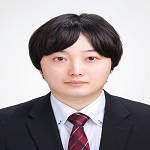
Education Ph. D. in Engineering (Sep. 2022) Department of Applied Physics, School of Engineering, The University of Tokyo, Japan Research Experience Assistant Professor Jan. 2023 - Present Tokita Lab, Institute for Chemical Research, Kyoto University JSPS Research fellow PD Oct. 2022 – Dec. 2022 Ashihara Lab, Institute of Industrial Science, The University of Tokyo JSPS Research fellow DC1 Apr. 2020 – Sep. 2022 Ashihara Lab, Institute of Industrial Science, The University of Tokyo
Hartmut Yersin studied physics at the Technische Universität Berlin, where he received his PhD degree. At the University of Regensburg, he completed his Habilitation in physical chemistry and was appointed professor. For research stays, he was invited to California, Great Britain, Portugal, Japan, and Hong Kong. He is interested in detailed photophysical understanding of electronic structures and excited state dynamics of organo-metal complexes as well as purely organic compounds. For more than two decades, his activities are focused on mechanisms for efficient light generation in OLEDs (triplet harvesting, singlet harvesting based on thermally activated delayed fluorescence, TADF) and on designing new emitter materials and concepts. He published 8 scientific books, more than 350 scientific articles, and filed more than 80 material patents.
Koichi Takiguchi received a Ph.D. degree in electrical engineering from the University of Tokyo in 1992. He then joined NTT Laboratories where he engaged in the research and development of integrated-optic functional devices including first tunable optical chromatic dispersion compensator (TODC) and an optical orthogonal frequency division multiplexing (OFDM) demultiplexer. In 2012, he joined Ritsumeikan University as a professor. He is now interested in optical signal processing technology and its application to next-generation optical and terahertz (THz)-wave communication, optical and THz-wave sensing, and optical computing.
Jun-Ho Choi has been on the faculty of Gwangju Institute of Science and Technology since 2018. He received a B.S., M.S., and Ph.D in chemistry from Seoul National University in 1990, 1992 and 1996 and worked with Prof. M. Cho as a research professor at the IBS Center for Molecular Spectroscopy and Dynamics from 2014 to 2018. He developed a novel method to calculate solvent-induced frequency shift in a given chromophore and applied it to various spectrum simulation of molecules in aqueous solution. After taking up the GIST professorship in 2018, he proposed a hypothesis concerning bifurcating aggregation pathway and developed a novel method in combination of MD simulation, graph theory and spatial inhomogeneity measurement to examine molecular aggregation and their impact on water structure in various solution systems. In use of the comprehensive ways, he is working to resolve fundamental issues such as specific ion effect, miscibility, and liquid-liquid phase separation in binary mixtures.
Dr. Congwu Du received her PhD in Biomedical Engineering (BME) from the University of Luebeck, Germany in 1996. She is currently a professor at the Department of BME, State University of New York at Stony Brook. Her research interest focuses on development of advanced optical techniques for translational research, specifically for neuroimaging with the goal of addressing challenges related to the brain functional changes induced by drug addiction. She has over 100 scientific publications, also has been serving as a principle investigator on many bioimaging-based research grants, including the cutting Edge Basic Research Award (CEBRA) and the Awards of the American Recovery and Reinvestment Act (ARRA) and Brain Initiatives from National Institute of Health (NIH) and received the Outstanding Mentor Award from Department of Energy (DOE). She is a fellow of AIMBE, also she serves on the editorial board of several journals in the areas of Neuropharmacology, Neuroimaging and Biomedical Optics and Instrumentation.
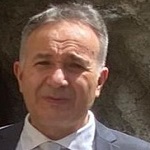
Since 2001, he has been a researcher at CNR in Naples. As visiting scientist, from 2001 to 2004, he spent several months at University of Twente (NL) and at UCLA (University of California, Los Angeles). In 2006, he founded the Nonlinear and Ultrafast Optics Lab at CNR in Naples and since then he has led the research activities of the same. In 2018, he received his qualification as full professor of Experimental Matter Physics. He has served as a reviewer of many international journals and as committee member of a number of national and international conferences. He has been co-chair of Workshop Progress in Nonlinear Photonics and Applications (PNPA 2020-2023 and 2024). He has been co-editor of the books: ‘Nonlinear Photonics Devices’ (MDPI, 2021) and ‘Advances in Nonlinear Photonics’ (Elsevier, 2023). Since 2021, he has been a section editor of Optik and an associate editor of Journal of Nonlinear Optical Physics & Materials. He is co-author of over 200 papers, mostly on nonlinear/ultrafast optics spectroscopy and photonics devices.
Ryota Katsumi is an assistant professor at the Toyohashi University of Technology (TUT), Japan. He completed a Ph.D. in physics supervised by Prof. Satoshi Iwamoto and Prof. Yasuhiko Arakawa at the University of Tokyo in 2021. His current research focuses on hybrid integration of solid-state quantum components (e.g. color centers in diamond and semiconductor quantum dots) on chip, nanofabrication techninologies, and the development of respective building blocks.
Work experience 1997- present Laser Point srl (Milano), President, (www.laserpoint.it ; www.laserpoint.eu). Laser Point manufactures a wide portfolio of laser power and energy meters able to perform laser measurements with high accuracy up to multi-kilowatts optical power level. We also provide unique in the market and patented Hi Tech solutions to measure ultrafast lasers down to picosecond and femtosecond pulse duration and high repetition rates up to MHz range. Laser Point developed the best hard coating to absorb the laser radiation which allows its laser and energy sensors to safely work to the highest level of optical power density! For more than 30 years Laser Point has consistently supplied its OEM, industrial, medical, and scientific customers worldwide with laser power and energy tools that proved their accuracy and reliability. 1995-1996: Group Manager at Alcatel Alsthom Recherche (Paris), development of new concept of high power diode devices and amplifiers. 1991: Swedish Institute of Microelectronics, study of MQW structures for E/O modulators, grown by MOCVD technique, very high quality demontrated, along with the understanding of group V thermalization effects. 1989-1994: Project Manager of the optoelectronic activities in the Alcatel Corporate Research Center (Milan). Study and realization of high power 980 nm Pump Lasers for EDFA amplifiers. Focus on the reliability problems. Proposal for a new DSM Laser “Gain modulation”. Study on the highly reliable Al-free Pump Lasers. 1987-1988: Tokyo Institute of Technology, team leader at the Department of Physical Electronics (Prof. Y. Suematsu). Main project followed: first proposal and demonstration of a conceptually new 1.55 microns Dynamic Single Mode Laser named “Distributed Reflector”, showing superior lasing properties (low Ith, high SMSR, reduced linewidth). 1984-1986: CSELT (National Telecom Research Center, Turin), researcher in the technological department. Main projects followed: epitaxy group (LPE, MOCVD, GSMBE), investigation on advanced technologies for novel devices, as support for the System Department. Study on SAGM photodetectors, first italian DFB laser.
Dr. Yu-Hsun Chou obtained his PhD from the Institute of Lighting and Energy Photonics at National Chiao Tung University in 2016. Following his doctoral studies, he engaged in postdoctoral research at the Department of Physics at the University of Michigan in the United States and at the Hebrew University of Israel, where he concentrated on microcavity polaritons. In August 2019, Dr. Chou became an Assistant Professor in the Department of Photonics at National Cheng Kung University. Under his stewardship, the photonics laboratory undertakes groundbreaking research in cutting-edge areas such as surface plasmon lasers, high-quality factor microcavities, and low-dimensional photonic devices. Dr. Chou's noteworthy contributions include the development of substrate-less surface plasmon lasers and waterproof perovskite quantum dot (QD) microcavity lasers, achievements that represent significant advancements in nanophotonics. His work not only significantly enhances scientific understanding and drives technological progress but also establishes a solid foundation for the development of sustainable and efficient technologies for the future.

Rand Ismaeel is a Royal Academy of Engineering research fellow; her research is based at both the University of Southampton and the National Oceanography Centre UK. Ismaeel is currently leading a research programme for Marine photonics (light-based) sensing work with a focus on ocean pollutants, methane, carbon dioxide and nitrous oxide using photonics sensors. Her research excellence was highlighted in the award of several research grants including the EPSRC, impact IAA, and the Photonics manufacturing hub. Ismaeel is EPSRC's early career researcher’s representative for the Engineering theme. She is currently a co-director for the Centre of Excellence in Data-centric Engineering for Clean Oceans.
Sean Hooten obtained his PhD in Electrical Engineering and Computer Science at UC Berkeley in 2021. Thereafter, he worked as a postdoc at UC Berkeley, and is now a research scientist in the Large-Scale Integrated Photonics group at Hewlett Packard Labs in Milpitas, California. His research interests include silicon photonics, computational electromagnetics, inverse design, machine learning, and artificial intelligence.
Binhao Wang received the B.S. degree in electrical engineering and the M.S. degree in optical engineering from Zhejiang University, Hangzhou, China, in 2008 and 2011, respectively, and the Ph.D. degree in electrical engineering from Texas A&M University, College Station, TX, USA, in 2016. From 2016 to 2020, he was a Research Scientist with Hewlett Packard Laboratories, Hewlett Packard Enterprise, Palo Alto, CA, USA. In 2020, he joined the State Key Laboratory of Transient Optics and Photonics, Xi’an Institute of Optics and Precision Mechanics, Chinese Academy of Sciences, Xi’an, China, where he is currently a Professor. He has authored or coauthored over 70 peer-reviewed journal and conference papers, and has been granted over 10 patents in China and the USA. His research interests include VCSEL photonics and silicon photonics.
Prof. Dr. habil. Arkady Shipulin (Chipouline) has received his Ph. D. in Laser Physics and Engineering at the Moscow Physical Technical University in 1995. Since 2018 Year, he works as a Professor at Skoltech. Prof. Shipilin is a coordinator of working group of Photonics in BRICS, member of multiple R&D committees, reviewer of international journals etc. Before that, from 2015, he was a Team Leader at the Institute for Microwave Engineering and Photonics, Department of Electrical Engineering, Technical University of Darmstadt, Germany. He acquired his international experience also during his work at University of Salt Lake City (USA) in 1999-2001, Telecommunication Industry in the USA (CORVIS Corporation, recipient of an Award of Excellence) in 2001-2005, and at the Friedrich-Schiller University of Jena, Germany in 1995-1999 and 2005-2014. Prof. Shipulin's current areas of research interests include various application of photonic integrated circuits, hybrid photonic structures (nanoplasmonics, optical metamaterials, and microresonators combined with quantum dots, carbon nano tubes etc.) in fiber optic telecom and optical sensors; laser physics und optoelectronics, optical waveguides, optical amplifiers, nonlinear optics etc. More academically oriented interests are focused in area of fundamentals of electrodynamics. His teaching interest is in elaboration of modern theoretical and practical courses in response to the modern scientific and technological challenges.
Ottavia Jedrkiewicz (h-index 26, >90 peer-reviewed papers, 3 patents), got her Master in Physics in “La Sapienza” of Rome (110/110 cum laude) and her PhD degree in Theoretical Physics at Essex University (UK). She is currently Senior Researcher for the Institute for Photonics and Nanotechnologies of CNR and works at Insubria University (Como, Italy), where since 2012 she has been leading the experimental research activities of the Ultrafast Nonlinear Optics group. O. J. has the Full Professor habilitation. Her research focuses on experimental quantum and nonlinear optics, with a particular interest in the engineering of quantum states in nonlinear parametric down-conversion processes, and on pulse/beam reshaping techniques for different applications including laser micromachining of transparent materials for photonic devices fabrication.
Ulrich David Jentschura is working on the theoretical descriptionof dynamic processes involving atoms and lasers, and on precision calculations of atomic spectra using quantum electrodynamics. In 2022, he published a book on "Quantum Electrodynamics: Atoms, Lasers and Gravity" with Gregory S. Adkins, which treats the subject matter in detail. Ulrich received his PhD from the University of Technology in Dresden (1999) and his habilitation from Dresden in 2003. He has co-authored more than 220 refereed publications and is a member of the Editorial Board of the journals "Atoms" and "Symmetry" (MDPI Publishing). He is a Full Professor of Physics at Missouri University of Science and Technology in Rolla, Missouri, USA, an Adjunct Professor of Physics at the University of Heidelberg, and a Fellow of the American Physical Society.

Christine Fernandez-Maloigne is a Computer Engineering graduate of the Université de Technologie de Compiègne, where she completed a PhD in Signal and Image Processing, and is qualified to direct research in mathematics after an HDR at the Université de Lille. She is a professor in image processing at the XLIM laboratory, where she was deputy director from 2012 to 2016. She has been Vice-President of the University of Poitiers, in charge of international relations, since June 2016. Since early 2019, she has been co-director of a joint laboratory between CNRS, SIEMENS, the University and Poitiers Hospital, in mathematical modeling and AI for medical imaging, I3M (Imagerie Métabolique Multi-noyaux Multi-organes). She is deputy director of the CNRS MIRES research federation, which brings together mathematics and ICST laboratories in northern New Aquitaine, and which she helped to create in 2012. At national level, she was a member of the National Universities Committee from 2008 to 2012 and again from 2016 to 2022. She was an appointed member of the Comité national de la recherche scientifique , section 7, member of the bureau, from 2012 to 2016. She was part of the French delegation to AFNOR for ISO JPEG compression standards, and in 2012 received the Augustin Fresnel national prize for her activities in color and multivariate imaging. She is an expert for a number of national agencies (ANR, HCERES, DGA, Campus France, etc.). Internationally, she is an expert for the European Commission and several European research bodies (Italy, Romania, Norway, etc.).She has also been the French representative on Division 8 of the CIE (Commission Internationale de l'Éclairage, Division Technologie de l'Image) since 2006 and secretary of this division since May 2015.She is a member of the Editorial Board of several international journals and was Deputy Editor-in-Chief of JOSA A magazine until 2021.She is now a Senior Fellow of the Optical Society of America.
Prof. Zeno Gaburro received his degree in Electrical Engineering with physics major with honors from Politecnico di Milano (Italy) in 1992 and his Ph.D. in Electrical Engineering from the University of Illinois in 1998. He joined Austria Mikro Systeme (now AMS-OSRAM), a VLSI company based in Graz (Austria) soon afterwards, as process characterization engineer. He then joined the Physics Department at The University of Trento (Italy) in 1999, where he is now associate professor of experimental physics. In 2008 he received a Marie Curie Fellowship for designing metamaterials to study Unruh radiation, a phenomenon related to Hawking radiation from black holes. He was a visiting scholar in Federico Capasso's group, from 2009 to 2013, working on the concept of metasurfaces and flat optics (N. Yu et al., Science 334, 2011, and US patent 20130208332). He realized there was a deep need for new approaches in teaching methods. He opened an Engineering Department in the African Leadership University program in Mauritius in 2016. The story had an unexpected twist with the Covid pandemic. In 2021 he founded Kadidak, a startup based in Trento (Italy) whose goals include the introduction of digital tools for new teaching methods in Italian universities and high schools.
Dr Rohit Ramakrishnan is a Postdoctoral Researcher at the Centre for High Energy Physics, Indian Institute of Science, Bangalore, specializing in Quantum Technology, Machine Learning, and Nanophotonics. Holding a PhD in Photonic Quantum Technology from the Electrical Communication Engineering Department at the Indian Institute of Science, Dr Ramakrishnan's expertise spans theory, experiment, and design in the interdisciplinary fields of Quantum Technology and Nanophotonics. With a rich research background, he previously served as a Research Assistant at the Centre for Quantum Technologies, National University of Singapore, contributing to the Quantum Satellite project. Before that, Dr Ramakrishnan was a Postgraduate Researcher in the Quantum Optics research group at the Australian Defence Force Academy. He is also the co-author of the book "The Quantum Internet – The Second Quantum Revolution," published by Cambridge University Press. Dr Ramakrishnan focuses on advancing Quantum Machine Learning, leveraging his expertise in Quantum Technology and Nanophotonics to push the boundaries of interdisciplinary research.
Mario Bertolotti is retired professor at the University of Roma La Sapienza of Physics and Optics. His research activity has spanned from solid state physics in particular radiation damage in semiconductors to laser, laser applications and nanophotonics. He is author of more than 500 peer review scientific papers and two books on the history of lasers, one book on the scattering of light, one book on evanescent waves in optics and one on the history of cosmic ray research.
Yuqing Jiao received dual Ph.D. degrees from the Eindhoven University of Technology, The Netherlands, as well from Zhejiang University, China, in 2013. Since then, he has been focusing on the research of InP-based nano photonics at the Institute of Photonic Integration (IPI, former COBRA Research Institute) within Eindhoven University of Technology. He is currently an Associate Professor with the institute. He has coauthored more than 60 international journal publications and 150 conference articles and holds four patents. His research interests include integrated nano photonics and heterogeneous integration technologies. He is a senior member of the IEEE Photonics Society, and currently serves as a Board Member for the IEEE Photonics Society Benelux Chapter.
Dr. Christos Tsokos received his Diploma in Electrical and Computer Engineering from the National Technical University of Athens (NTUA) in 2015, specialized in Telecommunications and Computer Networks, and his PhD from the Photonics Communications Research Laboratory (PCRL) in 2022. His research interests are in the field of Microwave Photonics and cover a broad range of applications, including the design of optical beamforming networks for 5G and 6G communications systems and photonics-enabled telemetry systems such as Radar and Lidar. In the period 2021 – 2022, Dr. Tsokos was employed as a Microwave Photonics Engineer and Project Manager at LioniX International, Enschede, The Netherlands, leading the technical implementation of commercial projects with multinational customers and participating in various European-funded research projects. In October 2022, Dr. Tsokos joined the PCRL as a Senior Researcher and Project Manager of large-scale European-funded projects.
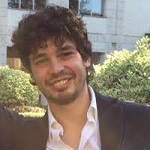
Angelo Angelini has completed his PhD in 2015 from Polytechnic of Turin. Since 2019 he is permanent researcher at the Italian National Institute of Metrological Research (INRiM) in the Advanced Materials and Life Sciences Division where he works on micro and nanostructured materials for photonics. He has published more than 30 papers in reputed journals.
Dr. Xiaochuan Xu is a professor of School of Electronic and Information Engineering at Harbin Institute of Technology (Shenzhen). He received his B.S. and M.S. degrees in Electronic Science and Technology from Harbin Institute of Technology, in 2006 and 2009, respectively, and his Ph.D. degree in Electrical Engineering from the University of Texas at Austin in 2013. In 2019, he joined Harbin Institute of Technology (Shenzhen). Dr. Xu’s research interest is integrated photonics and its applications in optical interconnect and sensing. Dr. Xu has published more than 130 papers in refereed journals and conferences. He has served as the principal investigator and co-principal investigator for more than 10 research projects supported by federal agencies including Air Force Office of Scientific Research (AFOSR), National Institute of Health (NIH), Department of Energy (DOE), and National Aeronautics and Space Administration (NASA). Dr. Xu is currently leading a Guangdong-Hong Kong joint research team developing high performance silicon-organic hybrid photonic devices. He is also a senior member of OSA, IEEE and SPIE.
Dr. Belén Ferrer obtained a technical degree in Civil Technology Engineering from the Polytechnic University of Valencia in 1997 and an M.S. in Civil Engineering from the University of Alicante in 2008. In 2011, she earned her Ph.D. from the University of Alicante, where she was recognized as the top performer in both her master's and doctoral studies. She currently holds the position of Associate Professor in Continuum Mechanics at the University of Alicante. Her primary research involves the application of image processing for displacement and vibration measurements, with a current focus on detecting and measuring structural movements using image-based subpixel methods.
Mikhail Portnoi earned his Candidate of Sciences degree from the Ioffe Physical-Technical Institute in St. Petersburg, Russia, and a doctoral degree from the University of Utah, USA. Following a brief postdoctoral position at Heriot-Watt University in Edinburgh, he joined the faculty of the University of Exeter, UK, in 1999. Over the course of his two decades at Exeter, Professor Portnoi mentored numerous Ph.D. and Master's students, many of whom pursued careers in academia. His diverse research interests range from exactly solvable problems in quantum and statistical mechanics and anyon excitons in the fractional quantum Hall effect regime to THz applications of carbon-based nanostructures and modelling white light-emitting diodes. Currently, his research is primarily focused on the theory and applications of Dirac materials. Professor Portnoi has authored over 130 papers in peer-reviewed journals, several book chapters, and a book. He has also delivered more than a hundred invited talks and held visiting professorships in Germany, Brazil, and China. Additionally, he has organized several international conferences and serves on the editorial boards of multiple journals.
Dr Lei Xu is a Senior Lecturer in Electrical Engineering at Department of Engineering in School of Science & Technology. He obtained his PhD (2014) in Optics from Nankai University, China. Since then, he has been performing research and engineering activities in different universities: Nankai University, The Australian National University and the University of New South Wales. His research research focuses on investigating light-matter interactions using resonant meta-structures, specifically manipulating electromagnetic fields at subwavelength scales through optically induced electric and magnetic multipolar resonances, with a specific focus on nanostructure-based energy harvesting technologies, bio-photonics and wearable sensors, tuneable and reconfigurable meta-devices for imaging processing.
Domenico Pacifici is an Associate Professor of Engineering and Physics and Director of the Nanofabrication Central Facility at Brown University. Prof. Pacifici is the recipient of a Richard B. Salomon Faculty Research Award, three Brown Research Seed Awards, a Dedicated Faculty Award from Brown’s School of Engineering and Tau Beta Pi, and a Henry Merritt Wriston Fellowship “for his contributions to excellence in teaching and for the devotion to the intellectual development of both graduate and undergraduate students.” His research efforts have focused on the opto-electronic properties of erbium doped silicon quantum dots for silicon-based microphotonics and fundamental light-matter interactions at the nanometer-scale for biosensing, optical communication, and energy harvesting applications. Together with his research group, Prof. Pacifici has pioneered the field of plasmonic interferometry and his research has been supported by the National Science Foundation, the Office of Naval Research, and the Juvenile Diabetes Research Foundation.
Dr. Wenhui Wang completed her Ph.D. from the University of Science and Technology of China in 2016. She presently serves as an Associate Professor at Ningbo University, China, with her research interests ranging from metamaterials to plasma dynamics and topological photonics.
Vassilis E. Lembessis is a Professor in the Department of Physics and Astronomy of King Saud University in Riyadh, Saudi Arabia. He obtained his B.Sc. in Physics at the University of Athens in Greece and his Ph.D. in Theoretical Quantum Optics at the University of Essex, UK, under the supervision of Professors Rodney Loudon (FRS) and M. Babiker. He worked as a research assistant at both Strathclyde University and University of Essex, and as an adjunct lecturer at the Technical University of Crete, Greece. Professor Lembessis is a member of the Optical Society of America, the Institute of Physics, and the Hellenic Physical Society and has participated in the 2021 Selection Committee of the prestigious King Faisal Prize in Sciences. His research interests include laser cooling and trapping, cold atom physics, structured light beams, atomic antennas, and plasmonics. He is also a popularizer of science having published the book “Taming Atoms – The Renaissance of the Atomic Physics”. SPIE Press, ISBN: 9781510635197, Bellingham, Washington USA, https://spie.org/Publications/Book/2563827, and also he is the founder and coordinator of the Greek electronic magazine for science popularization https://inscience.gr.
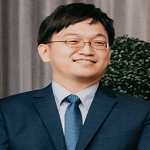
Mr. I-Jan Chen is the Co-founder and the Chairman of Southport co. Ltd. His interdisciplinary experience and observation of future technology trends led him to start up the Southport Co. Ltd. 2014. The spirit and specialty of Southport are to use the cross-disciplinary knowledge, including optics, material science, and biomedical science, with the new electro-optic technology of digital optics, also known as software-defined optics, to identify and solve the problems in microscopic imaging in different fields of applications. In the last nine years, Southport has accomplished in-vivo high-speed imaging, in-vivo neuroimaging, super-resolution imaging, nanomaterial inspection, quantum light source, compound semiconductor inspection, and 3D microstructure imaging. In 2021, The first software-defined microscope, named Fourier microscope, has been announced by Southport. This is the first time an all-in-one optical microscope can communicate with the digital world, including AI, or other software technologies.
Boris D. Barmashenko is a professor at Department of Physics, Ben-Gurion University of the Negev, Israel. He received his M.S. degree in physics from the Moscow Institute of Physics and Technology, Moscow, USSR, in 1980 and his Ph.D. degree from the Institute of Physics, Academy of Sciences of the Ukrainian SSR, Kiev, USSR, in 1985. From 1980 until 1990 he was a research associate in the Department of Theoretical Physics, Institute of Semiconductors Academy of Sciences of the Ukrainian SSR, Kiev, USSR. In 1991 he joined Ben-Gurion University of the Negev, Beer-Sheva, Israel, where he is currently a Professor in the Department of Physics. His research interests include diode pumped alkali lasers, chemical and gas flow lasers, optical resonators, chemically reacting gas flows, laser-based spectroscopy and nonlinear optics. Prof. Barmashenko tutored more than 20 Ph. D. and M. Sc. students. He is an author of about 200 papers in refereed journals and presented invited talks at more than 20 conferences.
Will be update soon
Dr. Virgilijus Vaičaitis is a leading researcher at Vilnius university Laser Research Center, Vilnius, Lithuania. He received a M.S. degree in physics at Vilnius university and a PhD degree at Institute of Physics of the National Academy of Sciences of Belarus (Minsk, Belarus). In 1996-1997 he worked in New Mexico university and Los Alamos National Lab (USA). His expertise lies in the field of laser physics, nonlinear optics and interaction of high intensity laser pulses with gaseous media. Currently he is working on terahetz radiation generation in laser created air plasma, as well as on detection and spectroscopic applications of broadband terahertz pulses.
Dr. Yosuke ARAGANE is Vice President, Head of IOWN development office, NTT. His responsibilities are managing IOWN R&D in NTT Labs and leading IOWN Global Forum operations with diverse IOWN Global Forum members. Since his joining NTT in 1997, his major research area was Cyber Security especially in CSIRT operations. Since 2008, he had managed various R&D organizations in NTT Group where he had developed R&D strategies. Since 2016, he became the head of Cyber Security R&D Promotion in NTT R&D Planning Dept. In 2019, he became a Vice President of IOWN development office. And since 2023, he has the current responsibility. He is an Alternate Director, Leader of Recruitment Taskforce, and Co-Leader of Officer team in the IOWN Global Forum. He is a member of IEEE, IEICE, and IPSJ.
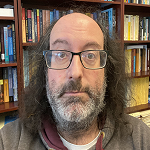
George Barbastathis received the Diploma in Electrical and Computer Engineering in 1993 from the National Technical University of Athens (Εθνικό Μετσόβιο Πολυτεχνείο) and the MSc and PhD degrees in Electrical Engineering in 1994 and 1997, respectively, from the California Institute of Technology (Caltech.) After post-doctoral work at the University of Illinois at Urbana-Champaign, he joined the faculty at MIT in 1999, where he is now Professor of Mechanical Engineering and holds the Singapore Research endowed chair. He has worked or held visiting appointments at Harvard University, the National University of Singapore, and the University of Michigan – Shanghai Jiao Tong University Joint Institute (密西根交大学院) in Shanghai, People’s Republic of China. His research interests are in machine learning and optimization for computational imaging and inverse problems; and optical system design, including artificial optical materials and interfaces. He is member of the Institute of Electrical and Electronics Engineering (IEEE) and the American Mathematical Society (AMS), a Fellow of the Optical Society of America (OSA) and the Society for Photo Instrumentation Engineering (SPIE), and is presently serving as Associate Editor for the journal Optica. In his free time, he enjoys urban art and design, and aspires to become more fluent in eastern languages, especially Thai and Mandarin Chinese.
Dr. Zhongrui Wang is an assistant professor with the Department of Electrical and Electronic Engineering at the University of Hong Kong. Prior to joining HKU, he received both B. Eng (First-class honour) and Ph.D. from Nanyang Technological University in Singapore. He did his post-doctoral research at the University of Massachusetts Amherst. His research interest lies in electrical and optical memory based neuromorphic computing and machine learning.
Wu Sun is a vice professor at Fuyang Normal University, Fuyang, China. He received a B.S. degree in Applied Physics from Chongqing University in 2010, an M.S. degree in Optical Engineering from Hefei University of Technology in 2013 and the Ph.D. degree in Optics from University of Science and Technology of China in 2016. His research interests include laser sensing, laser design, light scattering and absorption spectral. He is currently working towards a novel method for detecting liquid, gas and aerosol.
Hongwei Chen received the B.E. and Ph.D. (with the highest honor) degrees in Department of Electronic Engineering, Tsinghua University, in 2001 and 2006, respectively. He is currently a Full Professor of the Department of Electronic Engineering, Tsinghua University. He is senior member of OSA and IEEE. His current research interests include opto-electronic signal processing, photonic intelligence, silicon photonics and microwave photonics. Hongwei Chen has won the gold prize of national invention exhibition in 2017, the first prize of technological invention of Optical Engineering Society in 2019. His scientific achievements have been reported by media including MIT Technology Review, SPIE newsroom, EurekAlerk, China Science Daily, ScienceNet, etc. He is a reviewer for top-rank Nature/IEEE/OSA/SPIE journals and was invited to serve as a technical committee member in high-level international conferences including OFC/CLEO/Photonics West/MWP.
I'm Sushree S Dash, and I'm not just a physicist – I'm someone who's completely stoked about photonic devices, spectroscopic analysis, and all things quantum optics. I just graduated with a Ph.D. in Applied Physics in 2023. I've clocked over 7 years in the field, playing around with UV-VIS, IR, and X-ray sources for imaging and diving into density functional theory calculations for some serious surface science action. There's more to me than just science – as President of Women in Physics, I'm all about building a community and breaking barriers. I have been recognized for my leadership by Optica as top student leaders.
Dr. Yingwen Zhang is a senior research associate jointly affiliated with the University of Ottawa and the National Research Council of Canada. He grew up in South Africa where he completed all his studies. He received his B.Sc. in 2008 from the University of Cape Town majoring Physics and Applied Mathematics. Continuing at the University of Cape Town, he obtained a M.Sc. in 2010 and Ph.D. in 2013 both in High Energy Physics. His research interest shifted to the field of Quantum Optics during his postdoc. He has since worked as a postdoctoral fellow at the Council for Scientific and Industrial Research of South Africa and the University of Ottawa, as well as a research officer at the National Research Council of Canada. At present, his primary research centers around the utilization of multidimensional entangled photons for applications in Quantum Sensing and Imaging. His other research interests includes the study and application of Quantum Interference effects and Structured Light.
Sadao Ota is an applied scientist who combines a wide range of expertise and develops platforms for enabling multi-modal biological measurements for a pooled objects and utilizing the biological models and materials. He is currently an associate professor in a networked biophotonics and microfluidics group and appointed as a head director of life science divisions at Research Center for Advanced Science and Technology, the University of Tokyo, while simultaneously being CSO of ThinkCyte Inc. After he completed his Ph.D. program in the field of optics from UC Berkeley in 2013, he was appointed an assistant professor from 2014 and an associate professor from 2018. Based on the development of the world’s first and fastest AI-integrated imaging cell sorter, he founded ThinkCyte Inc. which is dedicated to commercializing the technology and its applications in medical and pharmaceutical fields.
Doyeol (David) Ahn obtained Ph. D in Electrical Engineering from the University of Illinois at Urbana-Champaign in 1988, M. S and B. S . from Seoul National University in 1985 and 1983, respectively. He has more than 35 years of experience in the semiconductor physics, optoelectronic devices and quantum information science. One of his early papers on strained layer quantum well lasers published in IEEE Journal of Quantum Electronics in 1988 became a classic in this field, which has more than several hundred citations. His work on non-Markovian model of quantum decoherence published in Physical Review A in 2000 and relativistic entanglement published in Physical Review A in 2003 are also considered as the classic papers in this field. Prof. Ahn is regarded as one of the pioneers in relativistic quantum information science in the arena of both special and general relativistic aspect of quantum information. In 1998, he was endowed with a multi-million-dollar project for nine years on quantum information processing and quantum computation from the Korean government. He almost single handedly initiated the quantum information science research in Korea. He holds 45 US patents, published a textbook entitled, “Engineering Quantum Mechanics,” from Wiley, 2011, three book chapters and coauthored more than 250 refereed journal and conference papers. In 2005, Prof. Ahn was elected to the IEEE Fellow for his contribution in the theory of semiconductor quantum-well lasers and the development of quantum information communication research. In 2009, he also became a Fellow of American Physical Society. In 2016, he received an ECE Distinguished Alumni Award from the University of Illinois at Urbana-Champaign. In 2020, Prof. Ahn was selected as one of finalists for “Million Dollar International Quantum U Tech Accelerator,” sponsored by the US Air Force out of more than 250 proposals submitted worldwide and later awarded US Air Force (AFOSR) grants in quantum computing algorithms. He is currently investigating non-Markovian model for quantum error mitigation, quantum circuit optimization and quantum algorithm for computational fluid dynamics.